United States Football League (1983-1985)
Tombstone
Born: May 11, 1982 – USFL founding franchise
Dissolved: February 1986 – Merged with Jacksonville Bulls
First Game: March 6, 1983 (L 13-7 vs. Philadelphia Stars)
Last Game: June 30, 1985 (L 48-7 @ Memphis Showboats)
USFL Championships: None
Stadium
Mile High Stadium (75,123)11985 Sporting News Official USFL Guide & Register
Branding
Team Colors: Gold & Black21985 Sporting News Official USFL Guide & Register
Ownership
Owners:
- 1983-1984: Ron Blanding
- 1984-1985: Douglas Spedding
Attendance
Best Seller
We earn commissions from purchases made through links in this post
Denver Gold Custom Name & Number USFL Replica Jersey
Now Available from Royal Retros!
Background
That’s popular former Denver Broncos Head Coach Red Miller on the cover of the Denver Gold media guide (above) from the inaugural spring season of the United States Football League in 1983. Miller was a revered figure in Denver. The temperamental coach helmed the Broncos during the “Orange Crush” era, racking up 42 wins in four seasons from 1977 to 1980, including the franchise’s first Super Bowl appearance and three trips to the playoffs. Then, in early 1981, he rubbed new Broncos owner Edgar Kaiser the wrong way and got himself fired.
Miller made an ideal front man (at first) for Denver Gold owner Ron Blanding. He was popular and credible among Denver sports fans. He was also relatively cheap, at least when compared with spending big bucks to lure a blue chip draft prospects away from the NFL. That was the route several of Blanding’s fellow owners took, opening their checkbooks to sign top collegians in the 1983 USFL draft. Then there was New Jersey Generals owner J. Walter Duncan who outraged the NCAA by signing University of Georgia underclassman Herschel Walker, the defending Heisman Trophy winner from the University of Georgia. Blanding ignored the arms race and quietly adhered to the original blueprint of the USFL. He kept his payroll low and assembled a roster of anonymous journeymen.
Adios, Red
In the absence of any name players, Miller served as the face of the Gold heading into the USFL’s inaugural season in the spring of 1983. And it worked. The Gold sold more than 30,000 season tickets. But once again, Miller had owner problems. Miller clashed with Blanding over the owner’s penny-pinching on player personnel and team operations. Blanding fired his coach in May 1983 after a 4-7 start, including four straight losses in Miller’s final month at the helm.
Blanding was the first USFL owner to fire his coach. He replaced Miller with Craig Morton, the former starting quarterback on Miller’s Broncos teams. Morton concluded his playing career the previous fall with the Broncos and had no previous coaching experience.
Less than a month later, Blanding became the first USFL owner to put his club up for sale. Soon after the Gold finished out the 1983 season with a 7-11 record.
1984 Season
In April 1984, in the middle of the Gold’s second season, Blanding found his buyer. Denver-area auto dealer Douglas Spedding also owned the city’s Colorado Flames minor league hockey franchise. Blanding acquired the Gold franchise by posting a $1.5 million letter of credit in 1982 when the league formed. He operated the Gold in the black during the 1983 season by adhering to the league’s original (but widely ignored) model of tight expense controls, solid marketing and and a roster composed of inexpensive castaways. The reported sale price to Spedding was $10 million dollars. Blanding reportedly became one of the very few – quite possibly the only – franchise owner to get more out of the USFL than he put in.
With Craig Morton back for his first full season handling the Head Coaching duties, the 1984 Gold raced out to a 7-1 record. 2nd year fullback Harry Sydney rushed for ten touchdowns. Four different Gold quarterbacks attempted 100 or more passes in 1984. Craig Penrose, one of Morton’s former back-ups with the late 1970’s Broncos, handled the bulk of the signal calling.
Collapse
Coincidentally or not, the wheels came off right around the time Spedding took over at midseason. After that 7-1 start, the Gold dropped eight of nine games. Denver headed into the final weekend of the 1984 season with a 8-9 record and needing a win (and help) to make the USFL playoffs. Spedding, meanwhile, made it clear that he was going to be a hands-on owner. He soon assumed GM duties for himself. Among the owner’s first decrees: front office workers would now open all of the players’ personal mail.
More significantly, Spedding sparred publicly with Craig Morton. Spedding attributed the club’s collapse to Morton’s less-than-obsessive 9-to-5 work habits, suggesting that Morton start putting in 12 hour days or be fired at the end of the season. The Gold won their final game of 1984 to finish 9-9, but failed to make the playoffs for the second consecutive year. Spedding fired Morton on June 27th, 1984 and then embarked on a public flirtation with Houston Gamblers offensive coordinator and run-and-shoot offense innovator Darrel “Mouse” Davis. Trouble was, the Gamblers were still active in the USFL playoffs. Spedding got his man a few weeks later. USFL Commissioner Chet Simmons later revoked the Gold’s 1985 1st round draft pick and slapped the team with a $50,000 fine as a penalty for tampering with Davis.
Economic Suicide
Under the spendthrift Blanding in 1983, the Gold were the only team in the USFL to turn a small profit. The team’s average attendance of 41,736 per game was tops in the league. The 1984 Gold, under the dual managements of Blanding and Spedding, lost approximately $2 million as announced attendance declined almost 20%. Worse news was coming.
In August 1984, the USFL owners, following the lead of New Jersey Generals owner Donald Trump, voted to move to a fall season beginning in 1986. Spedding had owned the Gold for all of four months. Now his top-drawing spring football franchise was staring at a head-to-head fall showdown with Denver’s beloved Broncos. That would be suicide and everyone knew it. USFL owners in other NFL markets began a series of relocations and mergers to position themselves for fall football in 1986. Spedding stayed put.
Despite the August 1984 vote, Spedding, like Tampa Bay Bandits owner John Bassett, remained a proponent of spring football. In February 1985 on the eve of the USFL’s third and final spring season, Spedding told the media: “If the $15 million contract we have (with ABC-ESPN) turns around and becomes a $30 million contract – and they’re not offering us anything in the fall – we’ll play in the spring.”
Myles Tannenbaum, owner of the Philadelphia Stars franchise, moved his club to Baltimore over the winter of 1984-85. The 1986 move to the fall would have placed the Stars in direct competition with the NFL’s Eagles in Philadelphia. Tannenbaum was swift to chide Spedding for deviating from the party line:
“Spedding probably will get fined for saying that,” Tanenbaum told Ken Murray of The Baltimore Evening Sun. “He’s a used car salesman in the league for one year. He probably thinks he’s learned a lot.”
Spedding’s comments underscored the fact that the fall vs. spring debate was not settled, despite the league vote the previous August. Trump argued that the league could only thrive in football’s traditional season. But there was a gaping hole in his position: the television networks had zero interest. USFL TV negotiator Eddie Einhorn made no headway with the three broadcast networks on securing a rights fee for a fall season. In fact, current partner ABC demanded a nearly 50% rebate on the 1985 spring rights fee because the USFL had exited key TV markets such as Boston, Chicago, Detroit, Philadelphia and Washington. And the impetus for leaving the NFL markets of Detroit and Philadephia had been the planned move to the fall. It was circular illogic.
Nevertheless, when the USFL owners convened on April 29th, 1985 to settle the matter once and for all, the vote was 13-2 in favor of switching to the fall, even with no hope of a network television contract. Tampa Bay and Denver- the two teams that thrived in NFL markets during the first two springs – were the dissenting votes.
Run and Shoot Rebuild
The Gold opened their third – and presumably final – season of spring football at Mile High Stadium on March 10th, 1985 against the Portland Breakers. With tickets sales flagging, the Gold announced it would offer a full refund to any fan unsatisfied with the product on opening night. Gold part owner Barry Fey, a concert promoter who devised the promotion, reportedly expected the money back guarantee would produce a Mile High crowd of 40,000 to 50,000. It was the kind of support to which the team was accustomed in 1983 and, to a lesser degree, 1984. Instead, an all-time franchise low of just 17,890 turned out. Despite a 29-17 Gold victory, a crowd of 1,484 fans endured boos and catcalls from their fellow spectators and long lines to collect $22,000 worth of refund checks on the way back to their cars.
“I think this is the first and last money back guarantee you’ll see from the Denver Gold,” General Manager Rich Nathan told the press. “It’s one thing to think about giving money back to people. It’s another thing to stand here and watch it happen.”
The Denver faithful who stuck by the Gold were rewarded with an exciting high scoring club for the first time in three seasons. Mouse Davis transformed the plodding Gold offense as promised. Big fullback Harry Sydney, who had keyed the Gold’s grind it out offense for two seasons, was shipped off to Memphis. As he had done with the Houston Gamblers in 1984 and the Toronto Argonauts of the CFL, Davis ran the run and shoot, surrounding a mobile quarterback (in this case a platoon of Vince Evans and Bob Gagliano) with a squad of quick, shrimpy receivers (Leonard Harris, Marc Lewis and Lonnie Turner) who ran short precise routes and racked up big reception totals.
Although infamous as a pass happy scheme, Davis’ Run n’ Shoot traditionally produced big numbers for its single set running backs as well. Davis’ backs ran a lot of draws and were expected to catch passes out of the backfield. Bill Johnson, a rarely used benchwarmer for the Gold in 1984, exploded for 1,261 yards rushing and 16 touchdowns in Davis’ offense in 1985.
Playoff Debacle
The Gold finished the 1985 regular season in 2nd place in the Western Conference at 11-7, the best record in franchise history and good enough for their first ever playoff berth. The 3rd-seeded Gold should have hosted the Eastern Conference’s 5th-seeded Memphis Showboats at Mile High. But attendance in Denver crashed 57% in 1985 to just 14,519 while Memphis drew 30,941 on average. In a departure from previous seasons, the USFL adjusted home field advantage based on revenue potential and moved the game to Tennessee. After losing their final regular season game 42-6 to the Jacksonville Bulls, the Gold came out flat again in Memphis. The Showboats routed the Gold 48-7 in the 1985 USFL quarterfinal. This would prove to be the final game for the Gold franchise.
Demise & Aftermath
In November 1985, the Gold announced a move to Portland, Oregon to replace the defunct Portland Breakers. The Breakers left town just a few months earlier owing over a million dollars in unpaid salaries to its employees. Unsurprisingly, Spedding found Portland’s civic and corporate leaders unreceptive to another ride on the USFL bandwagon. He scrapped the planned move after a month later. The Gold finalized a merger with the Jacksonville Bulls on February 1986. The deal would have seen the team move to north Florida with Mouse Davis as head coach. But the move was rendered moot when the USFL folded in August 1986 without playing a single down of fall football.
Denver Gold Shop
Denver Gold Logo T-Shirt
Order Now at Royal Retros
Denver Gold USFL Mini-Helmet
Available Today at Royal Retros
Editor's Pick
Football For A Buck
The Crazy Rise and Crazier Demise of the USFL
By Jeff Pearlman
The United States Football League—known fondly to millions of sports fans as the USFL—did not merely challenge the NFL, but cause its owners and executives to collectively shudder. In its three seasons from 1983-85, it secured multiple television deals, drew millions of fans and launched the careers of legends such as Steve Young, Jim Kelly, Herschel Walker, and Reggie White. But then it died beneath the weight of a particularly egotistical and bombastic team owner—a New York businessman named Donald J. Trump.
In Football for a Buck, Jeff Pearlman draws on more than four hundred interviews to unearth all the salty, untold stories of one of the craziest sports entities to have ever captivated America. From 1980s drug excess to airplane brawls and player-coach punch outs, to backroom business deals and some of the most enthralling and revolutionary football ever seen, Pearlman transports readers back in time to this crazy, boozy, audacious, unforgettable era of the game. He shows how fortunes were made and lost on the backs of professional athletes and how, forty years ago, Trump was already a scoundrel and a spoiler.
When you make a purchase through an affiliate link like this one, Fun While It Lasted earns a commission at no additional cost to you. Thanks for your support!
[auction-nudge tool=”listings”]
In Memoriam
Ex-Gold wide receiver Kevin Williams died in a freight train wreck in 1996. Williams was working as a brakeman for Burlington Northern Santa Fe Corp. at the time. He was 38 years old.
Former Gold owner Douglas Spedding passed away in November 2007 at the age of 72.
Defensive end Calvin Turner (Gold ’83-’85) died of a brain aneurysm in 2012 at age 52..
Offensive guard George Yarno (Gold ’84-85) passed after a battle with stomach cancer on August 8th, 2016 at age 58.
Head Coach Red Miller (Gold ’83) died from complications of a stroke on September 27, 2017. Miller was 89 years old.
Links
###

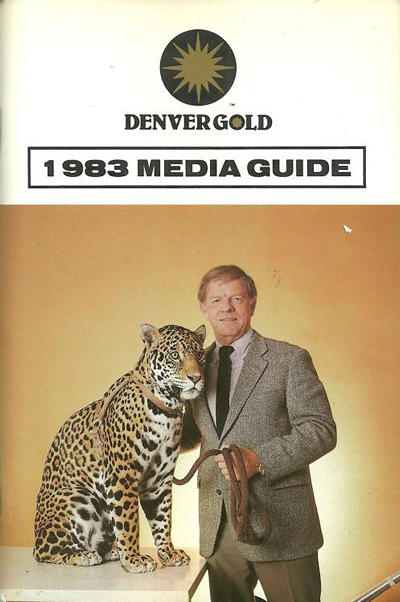
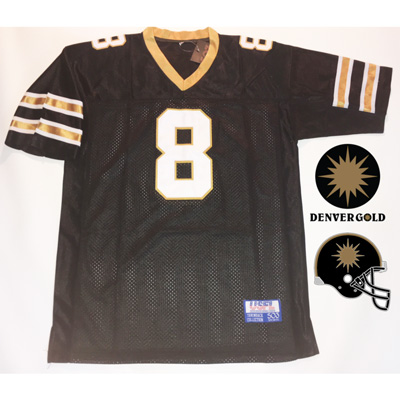
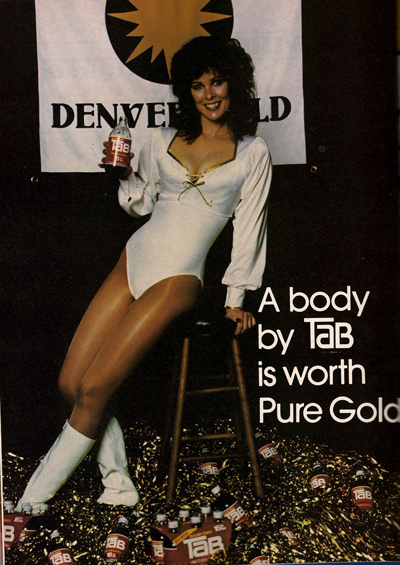
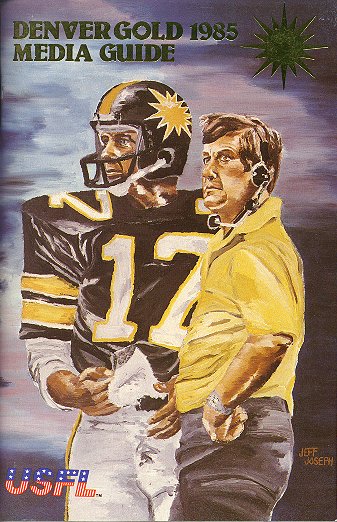


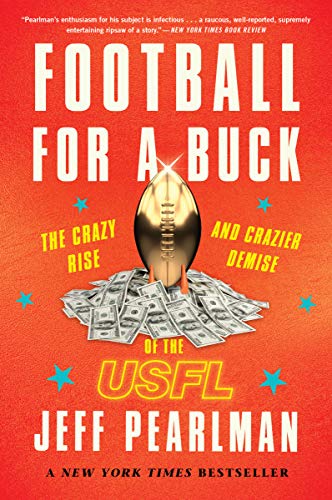
One Response
Loved watching old footage of USFL football .